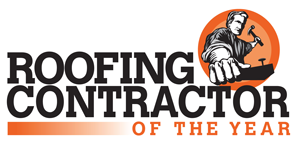
When football season starts, it’s time to start thinking about exterior fall maintenance projects. It’s unfortunate really. With games on Saturday and Sunday, who has the time to inspect your roof? The truth of the matter is that once the leaves fall, you have one very important job; removing leaves from your roof and gutters.
We all should know that leaves can clog your gutters but leaving a thick layer of leaves on your roof can be problematic as well. Read on!
Can Fallen Leaves Damage Your Roof?
Yes, leaving fallen leaves on your roof can cause damage. Let’s break it down.
After heavy rain during the week and before the next cold weather snap, you decide to grab the leaf rake and remove the dead leaves from your yard. The top layer of leaves may be dry but as you get deeper into the pile you find wet leaves. These leaves are heavy, slimy, and do not respond too well to the leaf blower.
Now, look at the valley of your roof and see that similar-sized pile of leaves resting up there. It traps moisture on your roof and prevents your shingles from getting dry. Shingles aren’t waterproof, in fact, they can start to form mold, and algae, create water damage, and rot the wood if exposed to too much moisture.
In short, leaving fallen leaves = problems with your roof system.
Additionally, leaving the leaves on your roof can create a dam that prevents water from traversing to your gutters. Or the leaves may wind up in your gutters, effectively jamming them up, and creating problems with gutters, fascia, and soffits.
If this happens repeatedly, you should look to invest in gutter guards for your home to reduce the volume of debris that collects in the gutters. You will likely still need to clean them out twice a year, but it won’t be as intense.
Best Ways to Get Leaves Off Your Roof Without Getting on Your Roof!
Keeping your roof free and clear of leaves is a great goal to have. But how do you prevent them from landing on your roof?
Trim Back Tree Branches
This tried-and-true method has numerous benefits. We all love tree coverage and the shade they provide. There are drawbacks, however.
First and tied directly to the subject at hand, trees over the roof of your home will drop leaves on your roof. These require pick-up so by eliminating or reducing the coverage will eliminate or reduce the clean-up.
Secondly, tree branches can break and fall during an extreme weather event and cause structural damage to your home and belongings.
Finally, trees over your home create an avenue for small animals to access roof points that might not be possible if the coverage is reduced or eliminated. Squirrels in your attic? Did they access it due to tree branches over your home?
What’s The Best Way to Get Leaves Off My Roof?
Getting leaves off your roof should be a quick job if you use the right tool. Use a leaf blower to quickly and efficiently remove leaves from the roof. Using a tool like a leaf blower is easy but do not neglect safety measures to complete the task.
Top Tips for Removing Leaves from Your Roof
Select a Dry Day for Your Project
Try for a dry period to ensure that the leaves are dry, and this will expedite leaf removal.
Get the Blower on the Roof Safely!
Do not try to ascend a ladder while carrying your leaf blower. Instead, use a rope and pull it up to you. Using the same rope, lower it when you are finished.
Point the Blower Down Your Shingles and NEVER Up
By pointing blowers down, you will not force shingles up. Leaf blowers can force air at speeds up to 250 MPH which can easily damage your shingles.
Don’t Like Heights? Use a Gutter Cleaning Service
No one said you must DIY everything in and around your home. Use a gutter cleaning service to handle the high stuff!
Contact Kearns Brothers, Metro Detroit’s Leading Roofers
The Kearns Brothers have been helping Detroit homeowners with their roofs for nearly 40 years. When it comes to roofing, there isn’t anyone with the level of expertise and customer satisfaction that Kearns provides MI homeowners. Call us today to schedule your free roof inspection!
Tags
Subscribe to Kearns Brothers's Blog



Comments